NASA Reveals Incredible Image of Star Cluster Shining in Ultraviolet
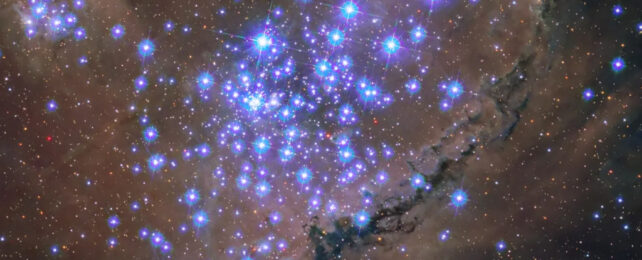 Part of the satellite galaxy's star cluster NGC 346. (NASA/ESA/STScI/ Gladys Kober)
Part of the satellite galaxy's star cluster NGC 346. (NASA/ESA/STScI/ Gladys Kober)Just outside the Milky Way Galaxy, roughly 210,000 light-years from Earth, there is the dwarf galaxy known as the Small Magellanic Cloud (SMC). Measuring about 18,900 light-years in diameter and containing roughly 3 billion stars, the SMC and its counterpart – the Large Magellanic Cloud (LMC) – orbit the Milky Way as satellite galaxies.
Scientists are particularly interested in these satellites because of what they can teach us about star formation and the process where galaxies evolve through mergers, which is something the Milky Way will do with these two galaxies someday.
Another interesting feature of the SMC is the spectacular star cluster known as NGC 346, located near the center of the brightest star-forming region in the SMC, the hydrogen-rich nebula designated N66.
Yesterday, NASA released a new image of this star cluster acquired by the venerable Hubble Space Telescope, which provides a unique and breathtaking view of this star cluster.
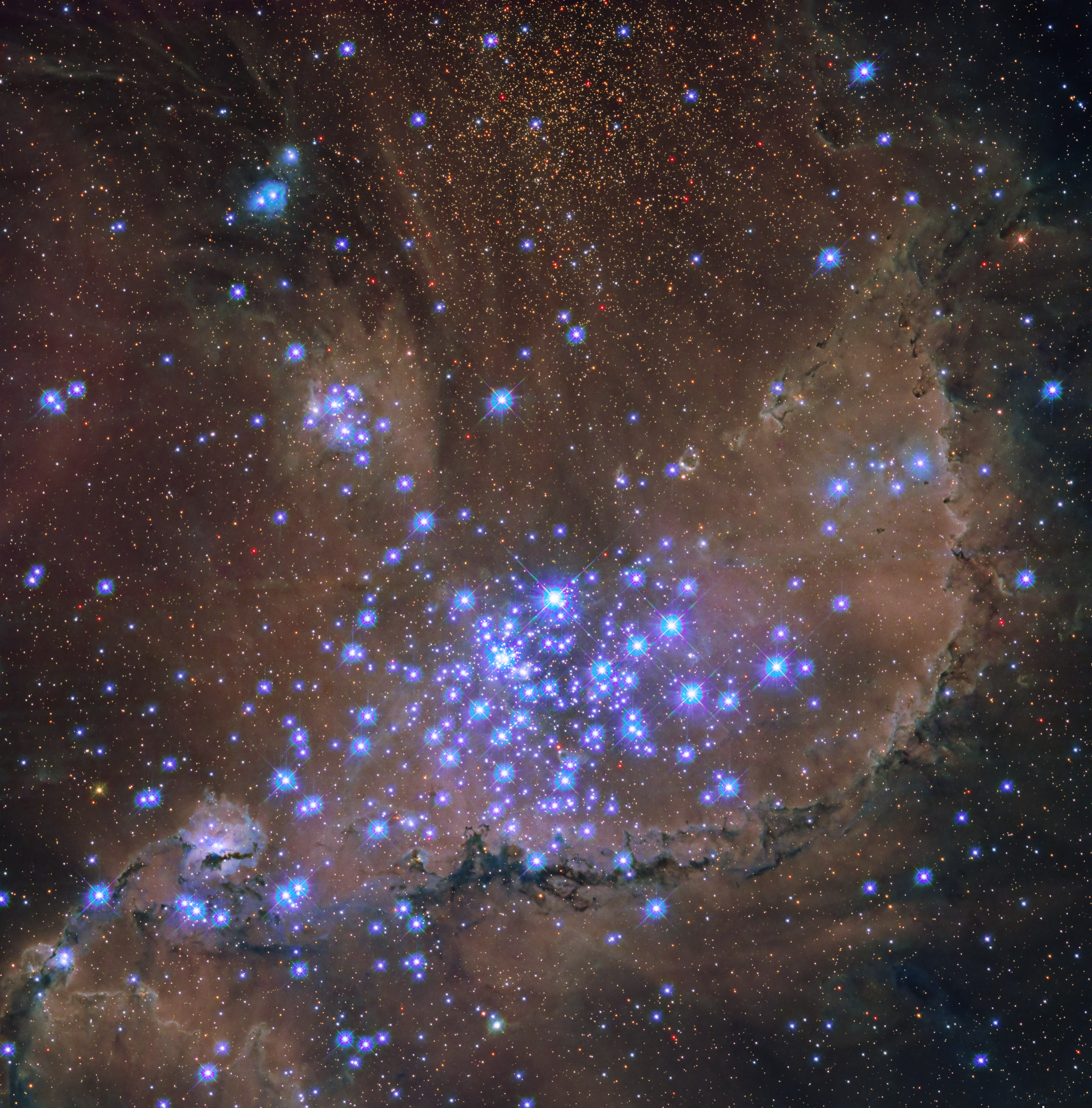
These images were made possible thanks to Hubble's sharp resolution and unique ability to make sensitive ultraviolet observations.
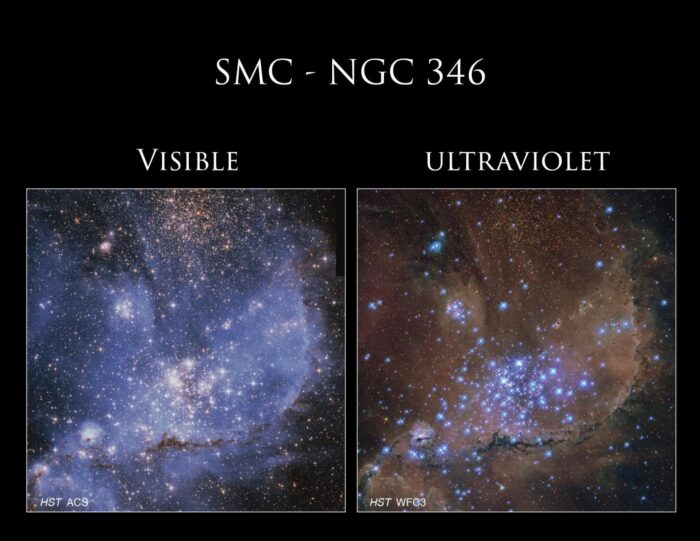
The interaction between the dozens of hot, young, blue stars and the surrounding dust and gas makes this region one of the most dynamic and intricately detailed star-forming clusters ever observed.
While NGC 346 has been observed by Hubble in the past and more recently by the James Webb Space Telescope, the images they took combined visible and infrared light, showcasing the gas and dust structure of the surrounding nebula. This latest view combined ultraviolet and some visible light data from Hubble's Advanced Camera for Surveys (ACS) and Wide Field Camera 3 (WFC3).
The purpose of these observations is to learn more about star formation and how it shapes the interstellar medium (ISM) of low-metallicity galaxies like the SMC. These conditions are believed to be similar to what existed during the early Universe when there were very few heavy elements.
It was not until the first generation of stars (Population III) and galaxies emerged – ca. 100 million to one billion years after the Big Bang – that heavier elements began to form. These were distributed throughout space when these stars reached the end of their relatively short life cycle and went supernova.
After more than three decades of service, the Hubble Space Telescope is still fulfilling its original purpose: helping scientists investigate the origins and evolution of the Universe!
Falcon 9 rockets have launched twice since the FAA’s Friday approval for a return to flight.
By Wes Davis,
Aug 31, 2024
:format(webp)/cdn.vox-cdn.com/uploads/chorus_asset/file/25597370/2168837148.jpg)
Photo: Joe Raedle / Getty Images
The Federal Aviation Administration (FAA) cleared SpaceX’s reusable Falcon 9 rocket for flight on Friday after temporarily grounding it following a failed landing earlier this week. The company has already pulled off two launches since the FAA’s decision, putting 42 more Starlink satellites into orbit, it announced in a post on X today.
The agency said that while the investigation of the landing incident remains open, flights can continue, “provided all other license requirements are met,” according to CNN. SpaceX had requested a return to flight on Thursday, the same day the FAA initially grounded the rocket, reports Reuters.
Aside from regular Starlink flights, SpaceX is also preparing to launch Polaris Dawn, a private mission to send billionaire Jared Isaacman and three others through the Van Allen radiation belts to perform the first private astronaut spacewalk.
SpaceX is also expected to send two astronauts to the International Space Station on NASA’s Crew-9 mission as soon as September 24th. The US space agency just bumped two astronauts from that mission in order to make room for astronauts Sunita Williams and Barry Wilmore, who NASA plans to bring back to earth in February after their Boeing spacecraft was found to be unfit for a crewed return flight.
Astronaut Barry Wilmore called NASA for help figuring out what’s causing sonar-like noises to come from Starliner.
By Wes Davis,
Sep 1, 2024,
:format(webp)/cdn.vox-cdn.com/uploads/chorus_asset/file/25596111/starliner_spacecraft_boeing.jpg)
Image: NASA
US astronaut Barry Wilmore called NASA ground crew on Saturday, asking for help with a repetitive knocking sound that was coming from the Boeing Starliner craft. The interaction was captured by a NASA Space Flight forum member, who included a recording of it in a post that was spotted by Ars Technica.
In the recording, Wilmore asks NASA crew in Houston to configure their call so that he could show them the noise, which he says is coming from the speaker inside Starliner. Then, a repetitive clanging sound with slight there’s-something-on-the-wing vibes can be heard. The Earthside crew member describes it as sounding “almost like a sonar ping.”
The mysterious sound could very well have a very mundane explanation, like the very specific type of feedback loop one person on Reddit compared it to. At the very least, neither Wilmore nor the NASA ground team member he spoke with seemed particularly concerned (even if it does sort of resemble the unnerving Ganado theme from Resident Evil 4).
Boeing’s Starliner is currently scheduled to undock on September 6th for an automated, uncrewed return to Earth, leaving its original intended passengers, Wilmore and fellow astronaut Sunita Williams, behind on the ISS until early next year.
NASA identifies strange sound from Boeing's faulty Starliner
By Ellyn Lapointe For Dailymail.Com
Published: 2 September 2024
NASA has identified the source of strange, 'sonar-like' sounds coming from inside Boeing's Starliner capsule, and says that the noises have stopped as of now. In an emailed statement, a NASA press officer told DailyMail.com that the cause was 'an audio configuration between the space station and Starliner.'

The space agency had been searching for the source of the sounds since Saturday, when stranded astronaut Butch Wilmore radioed down to Johnson Space Center in Houston to report a mysterious pulsing noise coming from one of the spacecraft's speakers. 'I've got a question about Starliner. There's a strange noise coming through the speaker and I didn't know if you can connect into the Starliner... I don't know what's making it', he said.

An audio configuration issue could mean a lot of different things, but a retired NASA scientist told DailyMail.com that NASA is likely referring to a signal feedback loop. 'It could have been that the electronics they have just happened to produce a pulsing effect when there was feedback,' former NASA planetary physicist Phillip Metzger, who previously tested intercom systems on the International Space Station , told DailyMail.com.

An audio feedback loop occurs when an audio signal is sent from an input to an output, and then back to itself, creating a loop of sound. Often, it sounds like a steady howling or screeching sound that gets consistently louder as the looping continues - quite unlike the steady pulsing that Wilmore heard. 'But depending on the electronics, it might not do that,' Metzger said. 'Depending on the kind of filtering they have, it might produce some other effect.'

Therefore, it's still plausible that this sound could have stemmed from a feedback loop. Both Metzger and NASA confirmed that this issue should not affect any of Starliner's other systems, and should not pose any safety risks or interfere with the spacecraft's functionality. Prior to NASA's statement, Metzger took to X, formerly Twitter, to speculate that the cause of the sound could be electromagnetic interference, or EMI.

EMI occurs when stray electromagnetic signals get into an electronic system, like Starliner's auditory system, he explained. The cables inside a spacecraft's electronic systems are wrapped in braided 'shielding' that prevents EMI from entering the system. But sometimes, these shield can break. This is especially common near a system's connectors - 'that's the weak point where things tend to break,' Metzger said.

Shielding can break down due to vibration, which may cause a braided wire to rub up against the machinery and fray over time. Or, it could be due to a design or manufacturing issue, he explained. 'If that little fine braided material breaks, then it creates an opening for the signal to get in,' Metzger said. It is still possible that the unusual sounds coming from Starliner's speaker were caused by EMI, but based on the NASA statement, Metzger thinks a feedback loop is an equally likely explanation.

'The space station audio system is complex, allowing multiple spacecraft and modules to be interconnected, and it is common to experience noise and feedback,' NASA wrote in their statement. This latest technical snafu comes just four days before Starliner is scheduled to undock from the ISS and begin its uncrewed return to Earth, leaving astronauts Sunita Williams and Butch Wilmore on the ISS for at least six more months. Wilmore and Williams have been marooned on the ISS since June 6 when they arrived on Boeing's spacecraft for what was supposed to be a week-long stay.

Starliner was plagued by helium leaks and thruster issues before, during and after the launch. On August 24, NASA officials decided that the faulty spacecraft was unfit to carry its crew back to Earth. Instead, Wilmore and Williams will remain on the ISS until February 2025, when they can hitch a ride home on SpaceX's Crew Dragon spacecraft. As for Starliner, NASA has chosen a date and time no earlier than 6:04 PM on September 6 to undock the spacecraft from the ISS and return it to Earth.

As long as the weather is clear for the landing site, Starliner will autonomously undock from the ISS and begin a six-hour flight to a desert landing target of White Sands Space Harbor in New Mexico. After the landing, it will be shipped back to Boeing's Starliner factory at Kennedy Space Center.
Boeing will try to land the test spaceship empty.

On left, Zena Cardman, who would have been the SpaceX Crew-9 commander, and Stephanie Wilson were cut from the upcoming spaceflight Credit: SpaceX
With Boeing's troubled spaceship deemed too risky to bring its crew home from space, NASA has bumped the two female astronauts set for the next International Space Station rotation to free up seats.
Zena Cardman, who would have been the SpaceX Crew-9 commander, and Stephanie Wilson were cut from the upcoming crew. NASA astronaut Nick Hague, who would have served as pilot, will shift into the commander role, and Roscosmos cosmonaut Aleksandr Gorbunov will accompany him as mission specialist.
The decision to reduce the SpaceX Dragon crew from four astronauts to two leaves a pair of seats empty for Boeing Starliner's crew, Butch Wilmore and Suni Williams, on the return trip. They will ride home with Hague and Gorbunov at the end of the scheduled rotation in February 2025.
SEE ALSO: The long, thorny history of Boeing's Starliner spaceship

Only NASA astronaut Nick Hague and Roscosmos cosmonaut Aleksandr Gorbunov will fly in the SpaceX Crew-9 capsule to the International Space Station this September. Credit: SpaceX
This summer, veteran astronauts Wilmore and Williams have remained in limbo 250 miles above Earth, as NASA leadership and Boeing mission managers discussed whether Starliner was safe to bring them home. During the test flight in June, the crew discovered perplexing propulsion issues on Starliner.
NASA chief astronaut Joe Acaba said choosing who would stay and who would go on the SpaceX Dragon flight was a tough decision. He had to balance selecting one NASA astronaut with experience to command the flight with preserving a spot for a Roscosmos cosmonaut in order to maintain an integrated crew.
"Zena and Stephanie will continue to assist their crewmates ahead of launch," Acaba said in a statement. "They exemplify what it means to be a professional astronaut."

The original SpaceX Crew-9, from left: NASA astronaut Stephanie Wilson, Roscosmos cosmonaut Aleksandr Gorbunov, and NASA astronauts Nick Hague and Zena Cardman. Credit: NASA / Bill Stafford / Robert Markowitz
Getting Starliner through the testing phase has been a relentless battle for Boeing, though its representatives have not always been forthcoming on why the program has suffered so many setbacks. A string of issues has spanned a decade.
After the Space Shuttle retired in 2011, NASA hitched all of its rides on Russian rockets to the space station, costing the United States tens of millions of dollars per ride. Some considered it a national embarrassment.
The allure of space often overshadows the harsh realities that come with living in an environment where gravity, a fundamental force on Earth, is almost nonexistent.
Written by Huma Siddiqui
Updated: September 2, 2024

Space exploration has always been a testament to human ingenuity and resilience, but it comes at a significant cost to the physical and mental health of astronauts. The allure of space often overshadows the harsh realities that come with living in an environment where gravity, a fundamental force on Earth, is almost nonexistent.
Astronauts like Sunita Williams, who have spent extended periods in space, exemplify the endurance required for such missions. However, the microgravity environment, isolation, and exposure to cosmic radiation present unique challenges that demand comprehensive strategies to ensure the well-being of those who venture beyond our planet.
Physical Challenges in Space
“One of the most immediate effects of space travel is the impact of microgravity on the human body. On Earth, gravity is constantly exerting force on our muscles and bones, which keeps them strong and functional. In space, the lack of gravitational pull leads to muscle atrophy and bone density loss. Astronauts can lose up to 1 percent of their bone mass per month in space, making long-duration missions particularly concerning for skeletal health,” Dr Srimathy Kesan, Founder, and CEO of SpaceKidz India explains to FinancialExpress.com.
Additionally, according to Dr Kesan “the microgravity environment causes fluid shifts in the body, leading to facial puffiness and increased intracranial pressure. This pressure can result in vision problems, a condition known as Spaceflight-Associated Neuro-ocular Syndrome (SANS).”
The dangers don’t end with muscle and bone deterioration. Space exposes astronauts to higher levels of radiation than they would encounter on Earth.
“Cosmic rays, which are highly energetic particles, can penetrate the body and damage DNA, increasing the long-term risk of cancer. These physical challenges necessitate rigorous preventive measures, including specialized exercise routines and nutritional plans designed to mitigate the effects of prolonged exposure to microgravity,” she explains further.
Mental Health and Well-being
While the physical challenges of space travel are well-documented, the psychological toll is equally significant. The isolation and confinement inherent in space missions can lead to feelings of loneliness, anxiety, and depression. The lack of natural light cycles in space disrupts circadian rhythms, often resulting in sleep disorders that can further intensify mental health issues. The monotonous environment, coupled with the high stakes and constant need for alertness, can contribute to mental fatigue and cognitive decline over time.
Also Read
Boeing’s Starliner Woes Deepen as NASA Astronaut Sunita Williams’ Mission Faces Further Delays
To combat these issues, space agencies like NASA and Roscosmos have implemented several strategies. Maintaining a structured daily routine is crucial for astronauts to create a sense of normalcy and purpose. Regular communication with family and mission control helps alleviate feelings of isolation, while engaging in hobbies and leisure activities provides a much-needed mental break. Psychological support is also a key component, with astronauts having access to mental health professionals throughout their missions. Post-mission, they undergo rehabilitation programs not only to recover physically but also to reintegrate into life on Earth and process their experiences.
Also Read
Boosting ISRO-NASA ISS Cooperation: Gaganyaan astronauts to ride aboard Axiom-4 crew dragon
Training and Preparation
Preparing astronauts for the severities of space travel is a complex process that requires extensive training. Russian cosmonauts undergo rigorous physical and psychological preparation at the Yuri Gagarin Cosmonaut Training Center, where they are subjected to simulations that mimic the high G-forces of launch and re-entry, as well as the psychological effects of prolonged isolation. Similarly, NASA’s astronaut training program at the Johnson Space Center includes underwater simulations to practice spacewalks, virtual reality training for handling spacecraft systems, and survival training in various environments to prepare for emergency situations.
International Collaboration in Space
The journey of astronauts like Sunita Williams highlights the importance of international cooperation in space exploration. Space has no borders, and the challenges faced by astronauts are universal. Whether they are American, Russian, or from any other nation, astronauts rely on one another for support, sharing knowledge and resources to overcome the difficulties of space travel. This collaboration underscores the shared human endeavor of exploring the unknown and the collective effort to ensure the safety and success of missions.
As humanity continues to push the boundaries of space exploration, understanding and mitigating the effects of space on both physical and mental health will be crucial. The resilience of astronauts, combined with advancements in countermeasures and international cooperation, will pave the way for the next generation of explorers to venture further into the cosmos.
Milky Way's Mysterious Ripple Could Be a Scar From an Ancient Collision
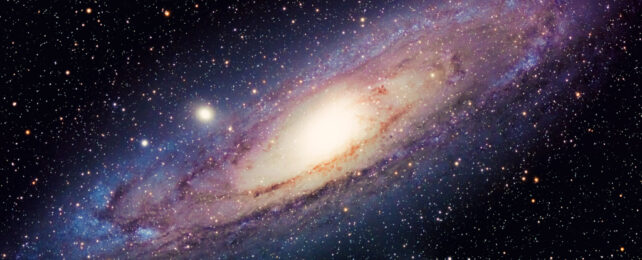 (Shawn PNW/500px/Getty Images)
(Shawn PNW/500px/Getty Images)Look hard enough at the roiling mist of gas and starlight that is our galaxy, and you'll find traces of a violent upbringing.
Yet the scars of our past aren't always easy to distinguish from more mundane tides that advance cosmic evolution, leaving researchers to speculate which patterns are evidence of cataclysmic events and which are typical signs of aging.
Using data collected using the Gaia satellite, an international team of researchers has uncovered what could be fresh details of a hypothetical dust-up between the Milky Way and an orbiting body of stars.
Since the 1960s, a series of studies have slowly revealed a distinct S-shaped bend can be seen in our galaxy's disk, speculated to be the product of a repeat beef with a smaller neighbor such as the Sagittarius Dwarf Spheroidal Galaxy.
According to a recent analysis, the positions and movements of tens of thousands of stars stretching a quarter of the way across the galaxy suggest the bend may itself be quietly ringing with a wave propagating through the large-scale warp.
Led by astronomer Eloisa Poggio at the Italian National Institute for Astrophysics, the team compared data on some 16,000 young giants and around 3,400 'distance marker' stars called Cepheids, statistically correlating their back-and-forth movements with their up-and-down motion.
The result is an oscillation that looks uncannily like the rolling motion of an ocean's swell coursing through the masses of stars out from the Milky Way's center, on top of but distinct from the tsunami surging below.
While the corrugation barely rises above the plane of the galaxy, its spatial extension is vast, calculated to stretch more than a quarter of the way out towards the edges of the disk, with the outward-moving stars deviating from their paths at around 10 to 15 kilometers (around 6 to 9 miles) a second.
Whether the radial and vertical motions are connected, or whether the corrugation and underlying warp ought to share a common cause is debatable. It was only by removing the signature of the Milky Way's bend itself that the remaining variations in star positions suggested some kind of abnormality may even be present.
"The warp and the wave do not necessarily need to be caused by the same event," Poggio explained to ScienceAlert. "However, we will try to explore this point in the future using numerical simulations."
Our galaxy hides its bruises well. It's only by looking for the subtle signatures of stars sitting out of place or moving in a curious direction that we might find reason at all to search for traces of past grievances.
"Future works analyzing other datasets, as well as different galaxy formation models, will reveal further details on the formation and evolution of the observed feature, as well as a more detailed dynamical description of how waves propagate in the disc of the Milky Way," the researchers conclude in their report.
This research was submitted to Astronomy & Astrophysics and is available on the preprint server arXiv.

China’s first Mars global color image map.
Posted on September 1, 2024
In July 2020, China’s Tianwen-1 mission arrived in orbit around Mars, consisting of six robotic elements: an orbiter, a lander, two deployable cameras, a remote camera, and the Zhurong rover. As the first in a series of interplanetary missions by the China National Space Administration (CNSA), the mission’s purpose is to investigate Mars’s geology and internal structure, characterize its atmosphere, and search for indications of water on Mars. Like the many orbiters, landers, and rovers currently exploring Mars, Tianwen-1 is also searching for possible evidence of life on Mars (past and present).
In the almost 1298 days that the Tianwen-1 mission has explored Mars, its orbiter has acquired countless remote-sensing images of the Martian surface. Thanks to a team of researchers from the Chinese Academy of Sciences (CAS), these images have been combined to create the first high-resolution global color-image map of Mars with spatial resolutions greater than 1 km (0.62 mi). This is currently the highest-resolution map of Mars and could serve as a global base map that will support crewed missions someday.
The team was led by Professor Li Chunlai from the National Astronomical Observatories of China (NOAC) and Professor Zhang Rongqiao from the Lunar Exploration and Space Engineering Center. They were joined by multiple colleagues from the Key Laboratory of Lunar and Deep Space Exploration, the Institute of Optics and Electronics, the University of Chinese Academy of Sciences, and the Shanghai Institute of Technical Physics. The paper detailing their research, “A 76-m per pixel global color image dataset and map of Mars by Tianwen-1,” recently appeared in the journal Science Bulletin.

Several global maps of Mars have been created using remote-sensing images acquired by instruments aboard six previous missions. These include the visual imaging systems of the Mariner 9 probe, the Viking 1 and 2 orbiters, the Mars Orbiter Camera-Wide Angle (MOC-WA) aboard the Mars Global Surveyor (MGS), the Context Camera (CTX) aboard the Mars Reconnaissance Orbiter (MRO), the High-Resolution Stereo Camera (HRSC) of Mars Express (MEX), and the Thermal Emission Imaging System (THEMIS) on the Mars Odyssey orbiter.
However, these maps all had a spatial resolution significantly less than what the CAS team created using images acquired by the Tianwen-1 orbiter. For example, the MGS MOC-WA Atlas Mosaic has a spatial resolution of 232 meters per pixel (280 yards per pixel) in the visible band, and the THEMIS Global Mosaic of the Mars Odyssey mission offers a spatial resolution of approximately 100 m/pixel (~110 ft/pixel) in the infrared band. While the MRO Global CTX Mosaic of Mars covered 99.5% of the Martian surface (88° north to 88° south) in the visible band, it has a spatial resolution of about 5 m/pixel (5.5 yards/pixel).
There has also been a lack of global color images of Mars with spatial resolutions of a hundred meters (110 yards) or higher. In terms of global color images, the Mars Viking Colorized Global Mosaic v1 and v2 have spatial resolutions of approximately 925 m/pixel and 232 m/pixel (~1010 and 255 yards/pixel), respectively. Meanwhile, the MoRIC instrument acquired 14,757 images during the more than 284 orbits executed by the Tianwen-1 orbiter, with spatial resolutions between 57 and 197 m (62 and 215 yards).
During this same time, Tianwen-1’s Mars Mineralogical Spectrometer acquired a total of 325 strips of data in the visible and near-infrared bands, with spatial resolutions varying from 265 to 800 m (290 to 875 yards). The collected images also achieved global coverage of the Martian surface. Using this data, Professor Li Chunlai, Professor Zhang Rongqiao, and their colleagues processed the image data that led to this latest global map of Mars. The team also optimized the original orbit measurement data using bundle adjustment technology.

By treating Mars as a unified adjustment network, the team was able to reduce the position deviation between individual images to less than 1 pixel and create a “seamless” global mosaic. The true colors of the Martian surface were achieved thanks to data acquired by the MMS, while color correction allowed for global color uniformity. This all culminated with the release of the Tianwen-1 Mars Global Color Orthomosaic 76 m v1, which has a spatial resolution of 76 m (83 yards) and a horizontal accuracy of 68 m (74 yards).
This map is currently the highest-resolution true-color global map of Mars and significantly improves the resolution and color authenticity of previous Mars maps. This map could serve as a geographic reference for other space agencies and partner organizations to map the Martian surface with even greater resolution and detail. It could also be used by space agencies to select sites for future robotic explorers that will continue searching for clues about Mars’ past. It could also come in handy when NASA and China send crewed missions to Mars, which are slated to commence by the early 2030s or 2040s.
By Jocelyn Solis-Moreira
Reviewed by Chris Melore
Research led by Professor Caroline Dorn, ETH Zurich
Sep 01, 2024
Fact Checked

Magma ocean planets that contain water – like the earthlike exoplanet GJ 1214 b in this artist’s concept – will only host a tiny fraction of this water on their surface. The majority of it is stored deep in their interiors. (Image: NASA/JPL-Caltech/R. Hurt)
ZÜRICH, Switzerland — You need three necessities to support life as we know it: oxygen, food, and water. While scientists have found ancient traces of liquid water on the surfaces of planets like Mars, it’s never been enough to foster life. However, some astronomers think it still might be possible. Instead of relying on Earth as a model for life, an international team argues that perhaps it’s time to consider other paths for planets to potentially form and develop life.
This theory is the basis behind a new study published in Nature Astronomy. Using computer simulations, researchers have calculated a new model for water distribution on exoplanets — planets orbiting stars in other solar systems.
Scientists believe Earth’s water (the oceans) covers the surface of the planet, with an iron core surrounded by silicate bedrock underneath. For years, this model has been used to determine the habitability of exoplanets.
“It is only in recent years that we have begun to realize that planets are more complex than we had thought,” says Caroline Dorn, a professor for exoplanets at ETH Zurich, in Switzerland, in a media release.
Since most exoplanets are located close to their home stars, they are often scalding-hot worlds covered in magma. However, the high temperatures make it impossible for magma to cool and form a solid base of silicate bedrock like on planet Earth. Additionally, the scorching heat makes water evaporate in these magma oceans.
These conditions would typically make these planets a non-contender for supporting life. However, the new model used in the study found that water still exists on these young planets. Instead of the surface, it is found deep in the interior. When looking underneath the surface, researchers say the amount of water hiding inside exoplanets may be much higher than astronomers have thought.
Model calculations helped to uncover how water can continue to exist inside these extremely hot worlds. According to Dorn, the iron core inside the exoplanet takes time to form. A large chunk of iron starts as droplets in magma. The tiny bits of water merge with the iron droplets, allowing them to sink beneath the surface.
“The iron droplets behave like a lift that is conveyed downwards by the water,” explains Dorn.

Scientists have long thought this phenomenon was only possible if a planet had moderate pressure, like what is seen on Earth. Until now, it was unknown if this reaction would happen on more giant planets with high-pressure interior conditions. The current study revealed that it still occurs. The greater the planet’s mass, the more water is absorbed into iron droplets and becomes part of the iron core.
Iron can absorb up to 70 times more water than silicates. However, this only occurs under specific conditions. With the high internal pressure in the core of exoplanets, water is still retained, but not in the presence of H20. Instead, it stays on as separate hydrogen and oxygen molecules.
The new results align with recent revelations about how planet Earth was formed. Four years ago, scientists made a surprising discovery: Earth’s oceans hold only a tiny amount of the planet’s water, mostly hidden deep in the planet’s core.
These new findings about where water is held on Earth made astronomers rethink their views of water distribution on other planets. Astronomers rely on telescopes to measure the weight and size of an exoplanet. Assuming certain conditions of these planets, these numbers are then crunched up to create mass-radius diagrams on a planet’s structure.
If the assumed conditions of solubility and water distribution are incorrect, then the volume of water may have miscalculated by up to 10 times the actual amount.
“Planets are much more water-abundant than previously assumed,” Dorn reports.
Understanding water distribution helps to understand a planet’s past and future. The presence of water helps compose a timeline of how these planets formed and developed. Water that has dropped to the interior of a planet is trapped forever. However, water dissolved in magma can find its way back up to the surface during mantle cooling. To put it simply, finding water on the surface of another planet means there’s probably a ton underground as well.
This idea is one goal of the James Webb Space Telescope. For two years, the telescope has been collecting data that could track down molecules in an exoplanet’s atmosphere. So far, scientists have only been able to measure molecules in the upper atmosphere, but this information could still be enough to understand a planet’s inner composition.
One planet that has caught the interest of astronomers is an exoplanet known as TOI-270d because of prior evidence of interactions between its magma ocean and atmosphere. Dorn and her team are also looking at planet K2-18b because of recent headlines that it could harbor potential life.
Looking beyond magma-rich exoplanets, the new findings could allow scientists to revisit the idea of life on super-Earths. These are planets with a larger mass than Earth and surfaces covered with deep oceans. It was assumed these water worlds could not harbor life because they contained high-pressure ice underneath that would stop the exchange of vital substances.
The current study suggests a low chance of finding a planet with deep water layers; more likely, water underneath a planet is trapped within the core. Therefore, it’s possible that planets with high water contents could produce Earth-like conditions which sustain life.
About Jocelyn Solis-Moreira
Jocelyn is a New York-based science journalist whose work has appeared in Discover Magazine, Health, and Live Science, among other publications. She holds a Master's of Science in Psychology with a concentration in behavioral neuroscience and a Bachelor's of Science in integrative neuroscience from Binghamton University. Jocelyn has reported on several medical and science topics ranging from coronavirus news to the latest findings in women's health.

Artist illustration of primordial black holes. NASA's Goddard Space Flight Center
Posted onSeptember 1, 2024
Cosmologists have long hypothesized that the conditions of the early universe could have caused the formation of black holes not long after the Big Bang. These ‘primordial black holes’ have a much wider mass range than those that formed in the later universe from the death of stars, with some even condensed to the width of a single atom.
No primordial black holes have yet been observed. If they exist, they might be an explanation for at least some of the ‘dark matter’ in the universe: matter that does not appear to interact with normal matter through electromagnetism, but does affect the gravitational dynamics of galaxies and other objects in the universe.
Now, we might have a new way to detect primordial black holes, although in a severely limited form.
This method comes via gravitational waves.

First detected in 2015 by the LIGO gravitational wave observatory, gravitational waves are ‘ripples’ in spacetime caused by dramatic events in the universe – most often the collision of giant objects like stellar mass black holes and neutron stars. About 90 confirmed gravitational wave sources have been found by the LIGO-Virgo-KAGRA (LKV) program since 2015.
In a research note published this month, Harvard astrophysicist Avi Loeb examined whether the LKV detectors could catch the signature of primordial black holes – specifically those racing by near the speed of light – or other similar objects moving at high speeds.
“All gravitational wave sources detected sofar involve mergers of stellar-mass astrophysical objects, such as black holes or neutron stars, at cosmological distances,” wrote Loeb in a Medium post in August. But these are not the only possible sources.
“Imagine a relativistic object moving near the speed of light within a distance from LIGO that is comparable to the radius of the Earth. At closest approach, such an object would generate a gravitational signal,” one heavily dependant on its mass and the speed at which it is moving, says Loeb.
With LKV’s current capabilities, the detectors would be able to see any objects moving near to the speed of light with a mass of 100 megatons (the mass of a smallish asteroid several hundred meters across), but only if it came within half the Earth’s diameter of the detectors.
In other words, the LKV detectors would have noticed if an object of this mass passed through the Earth, or very near its surface, in the decade since 2015, if it was traveling at very high speeds.
Of course, if an asteroid of that mass hit Earth at that speed, we’d be well aware of it from the devastating impact. As such, this capability is really of interest particularly for compact objects like primordial black holes, with diameters the size of an atom or smaller, that might pass nearby or even through the Earth without anyone noticing.
No such object has been seen by the LKV detectors.
It is not a surprising result, given that this is a very limited detection capability. It doesn’t tell us about objects further than ~6000 kilometers from Earth’s surface, and also fails to detect slower moving objects.
Future gravitational wave detectors, like ESA’s LISA detector, expected to launch next decade, will expand this range, though not by a lot.
Still, when you are seeking answers to some of the hardest questions in the universe, it’s worth checking where you can. This particular stone hasn’t been left unturned.
Read the Research Note in RNASS here.
Goodbye Hera: asteroid mission departs ESA test centre
02/09/2024
ESA / Space Safety / Hera
After a year of testing, ESA’s Hera asteroid mission for planetary defence is about to depart Europe and head towards its launch site in the USA. The Hera team looked on as the crated spacecraft – along with its twin miniature CubeSats and additional equipment – was driven away from ESA’s ESTEC Test Centre in Noordwijk, the Netherlands.
Following its lift-off this October, after a two-year cruise through space, Hera will rendezvous with the Didymos binary asteroid system: the Dimorphos moonlet, about the size of the Great Pyramid of Giza, is in orbit about 1.2 km away from the mountain-sized Didymos main body.

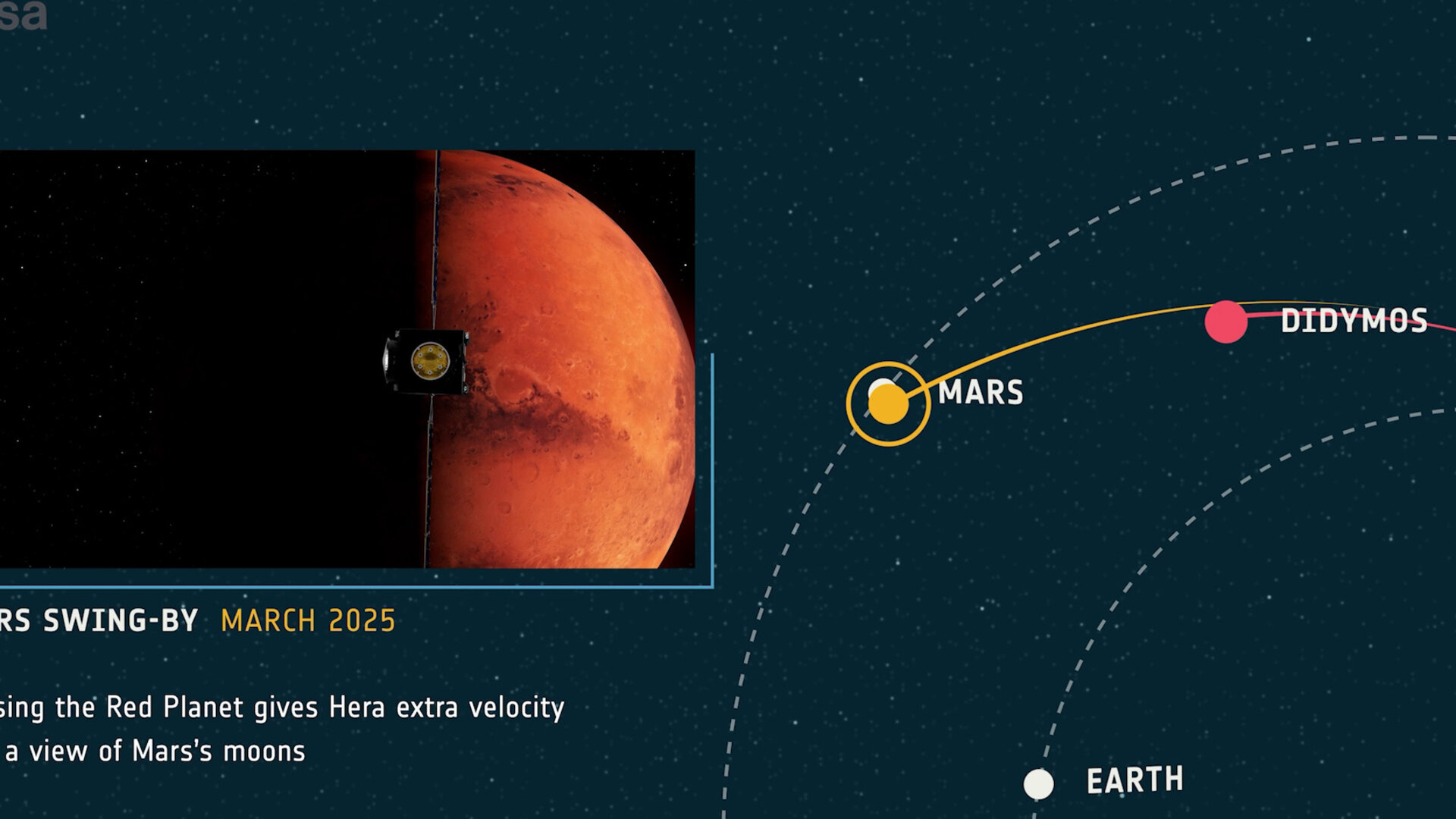
Hera trajectory to Didymos
Access the video
Hera will investigate the altered nature of Dimorphos due to NASA’s DART spacecraft impacting it and shifting its orbit in September 2022. The data returned by Hera will turn this ‘kinetic impact’ method into a well-understood and potentially repeatable planetary defence method.
 Hera and CubeSat patches on the spacecraft shipping container
Hera and CubeSat patches on the spacecraft shipping container“This is an emotional moment, after a year of intense testing activity,” comments Paolo Martino, ESA’s lead Hera system engineer.
“It feels like a huge accomplishment to have finally concluded the test process because there is always a lot of tension involved in testing, you never be quite sure everything will go to plan. But the best is yet to come, in the shape of the launch itself.”
The trio of spacecraft were transported overnight to Cologne airport in Germany, where they will be flown to Cape Canaveral in the USA this evening for launch by Space X Falcon 9 in early October.
ESA’s Hera team witnessed the car-sized spacecraft’s departure along with personnel from European Test Services and prime contractor OHB.
Paolo adds: “All of us have been working day and night together since the spacecraft got here in August 2023. To make sure we made the tight schedule every moment had to count, and that meant there were no holidays, no nights off or free weekends. Some of the OHB team have had to spend the whole of the last year away from home."
“Then there have been essential contributions from the companies making our two CubeSats – Tyvak in Italy producing the Milani mineral prospector and Gomspace in Luxembourg responsible for the Juventas radar mapper."


Hera’s navigation around the asteroids
Access the video
“I’d also highlight the work of GMV for the mission’s guidance, navigation and control, OHB Italy for overseeing Hera’s power system, Beyond Gravity for the solar arrays and FHP to dress the spacecraft in its multi-layer insulation, among many others. It has taken a lot of combined effort to reach this moment.”
The accelerated schedule of the whole mission – from contract signing to ready for launch into deep space in only four years – meant that the standard testing simulating the launch and space environments were combined with functional and software testing.

Hera’s last week at ESTEC saw the team packing the Hera spacecraft while completing essential paperwork for shipment – complicated by the fact that while the mission’s supporting equipment will eventually be returned from the USA, Hera and the CubeSats will not.
From this point ESA’s Hera team will be divided. Some will accompany the spacecraft at Cape Canaveral to perform final dry runs and functional tests, while the rest will head to ESA’s European Space Operations Centre in Darmstadt, Germany, where they will assist in Hera’s launch and early operations.
Hera mission manager Ian Carnelli will briefly bid farewell to Hera tonight as it is flown across the Atlantic Ocean aboard a gargantuan Antonov An-124 to Cape Canaveral: “This is a significant departure because the very first version of what would later become the Hera spacecraft was worked on here at ESTEC, at our Concurrent Design Facility, nearly two decades ago. It started life as an observer spacecraft called 'Sancho' that was to complement an asteroid impactor spacecraft ‘Hidalgo’ in ESA’s Don Quijote mission concept, which ended up becoming NASA’s DART."
"It’s been a long journey, but Hera is almost ready to make history!”
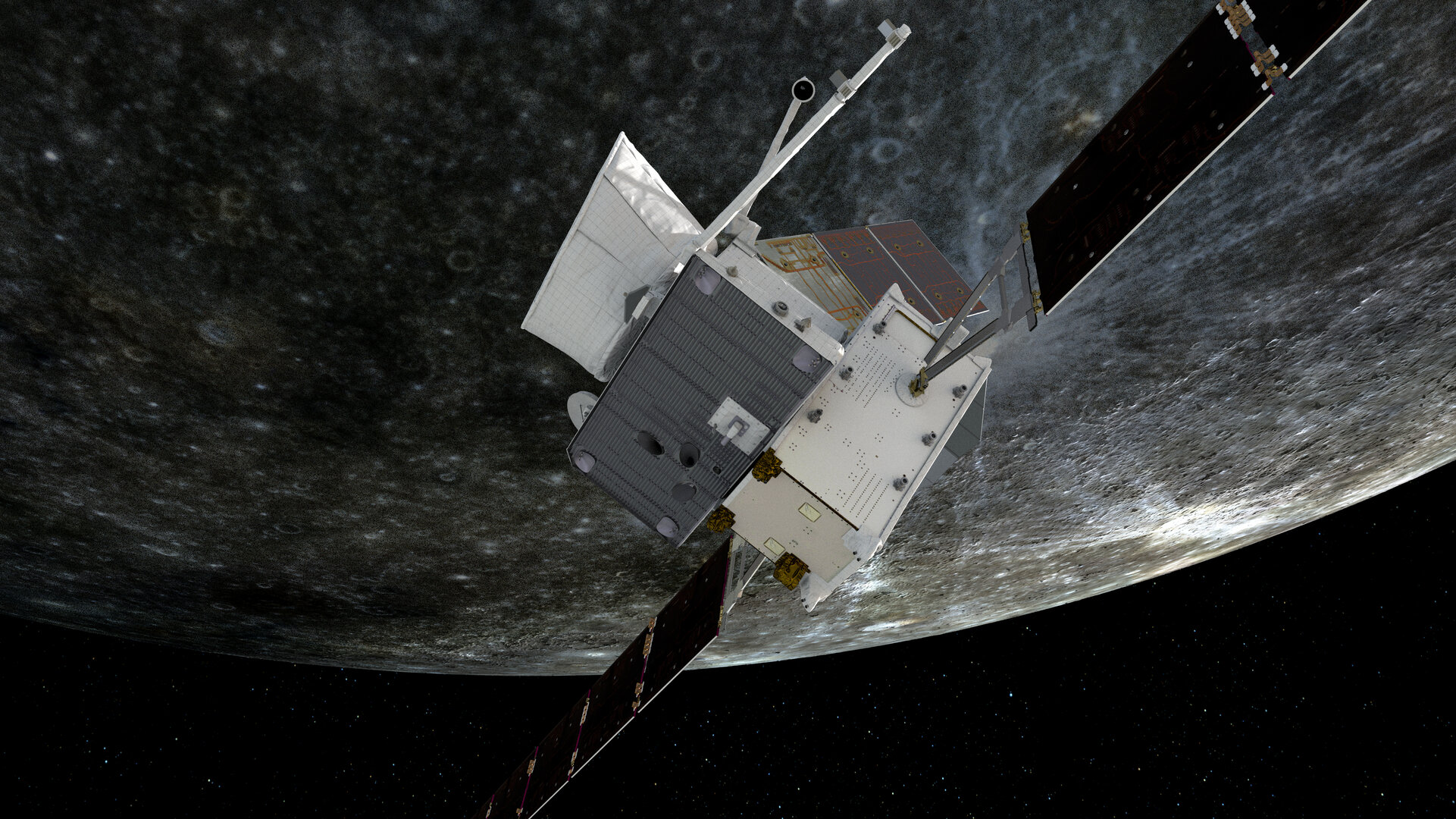
02/09/2024
ESA / Science & Exploration / Space Science / BepiColombo
Teams from across ESA and industry have worked continuously over the past four months to overcome a glitch that prevented BepiColombo’s thrusters from operating at full power. The ESA/JAXA mission is still on track, with a new trajectory that will take it just 165 km from Mercury’s surface on Wednesday.
Taking BepiColombo closer to Mercury than it’s ever been before, this flyby will reduce the spacecraft’s speed and change its direction. It also gives us the opportunity to snap images and fine-tune science instrument operations at Mercury before the main mission begins. Closest approach is scheduled for 23:48 CEST (21:48 UTC) on 4 September.
BepiColombo launched into space in October 2018 and is making use of nine planetary flybys: one at Earth, two at Venus, and six at Mercury, to help steer itself into orbit around Mercury. Once in orbit, the main science phase of the mission can begin.
The upcoming flyby will be the fourth at Mercury. Whilst it was always in the schedule, BepiColombo will get around 35 km closer to Mercury than originally planned, due to a new route devised by ESA’s flight dynamics team.

Why is it so hard to visit Mercury?
Mercury is the least explored rocky planet of the Solar System, mainly because getting there is incredibly challenging. As BepiColombo gets closer to the Sun, the powerful gravitational pull of our star accelerates the spacecraft towards it. What’s more, the spacecraft launched from Earth with a lot of energy, travelling far too quickly to be captured into orbit around little Mercury.
Overcoming both of these hurdles would be enormously difficult using onboard thrusters alone. So BepiColombo also makes use of gravity assist flybys to help it lose energy and slow down enough to eventually be captured into orbit around Mercury.
BepiColombo’s journey to Mercury becomes even more epic
BepiColombo is unique in that it comprises two science orbiters that will circle Mercury – ESA’s Mercury Planetary Orbiter and the Japan Aerospace Exploration Agency’s (JAXA) Mercury Magnetospheric Orbiter. The two are carried together to the mysterious planet by the Mercury Transfer Module (MTM). In April 2024, BepiColombo started experiencing an issue that prevented MTM’s electric thrusters from operating at full power.
Engineers identified unexpected electric currents between MTM’s solar array and the unit responsible for extracting power and distributing it to the rest of the spacecraft. Onboard data imply that this is resulting in less power available for electric propulsion.
ESA’s BepiColombo Mission Manager, Santa Martinez explains: “Following months of investigations, we have concluded that MTM’s electric thrusters will remain operating below the minimum thrust required for an insertion into orbit around Mercury in December 2025.”
A workaround to MTM’s reduced thrust has been cleverly devised by ESA’s Flight Dynamics team. They conceived a new trajectory that maintains the baseline scientific mission at Mercury but allows the spacecraft to use lower thrust during the cruise phase of the mission. With this new trajectory, BepiColombo is now expected to arrive at Mercury in November 2026.
Each of BepiColombo’s fourth, fifth (December 2024) and sixth (January 2025) Mercury flybys are going ahead as planned. All three will change the spacecraft’s speed and direction, bringing it more in tune with the orbit of Mercury around the Sun.
MTM will fire its thrusters in September to October 2024 to put BepiColombo onto its new trajectory. The fourth flyby takes BepiColombo closer than planned to Mercury, helping reduce the propulsion needed to reach the fifth flyby. The sixth flyby will then be used to branch onto the new trajectory.

Science at Mercury: a teaser of what’s to come
Beyond the later arrival date, the rest of the BepiColombo mission is expected to go ahead as planned, and the scientific objectives will not be affected. ESA expects the same science to come out of the mission, with data gathered by a suite of 16 instruments across the two orbiters.
Ten of these instruments can be operated during this week’s flyby, giving us another taste of what scientific discoveries we can expect from the main mission. Magnetic, plasma and particle monitoring instruments will sample the environment before, during and after closest approach. The other instruments cannot be operated because their fields of view are blocked by the carrier spacecraft.
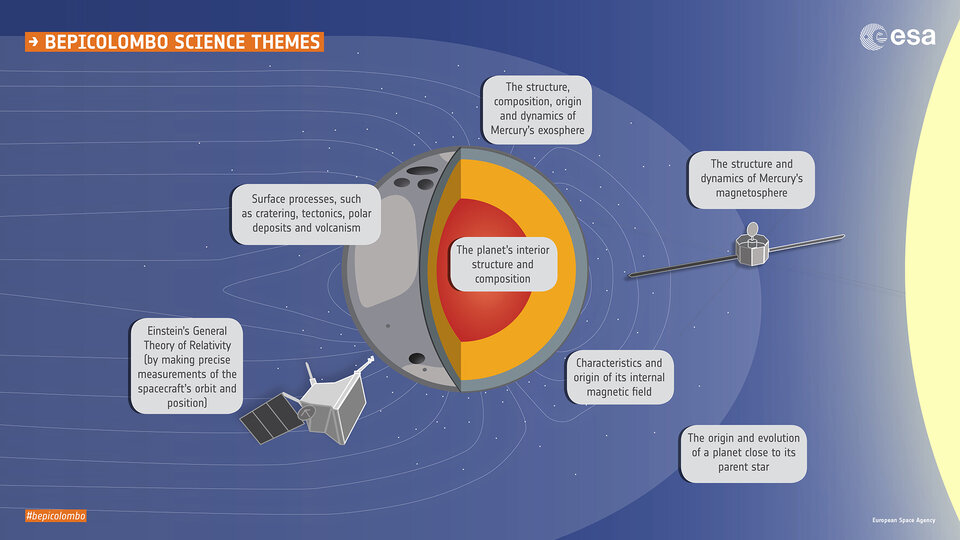
“It’s so exciting that BepiColombo can boost our understanding and knowledge of Mercury during these brief flybys, despite being in ‘stacked’ cruise configuration,” says Johannes Benkhoff, BepiColombo Project Scientist.
“We get to fly our world-class science laboratory through diverse and unexplored parts of Mercury’s environment that we won’t have access to once in orbit, while also getting a head start on preparations to make sure we will transition into the main science mission as quickly and smoothly as possible.”
Testing out the instruments during flybys is valuable for the science teams to check that their instruments are functioning correctly ahead of the main mission.
The simulation below shows the path that BepiColombo will take through Mercury’s magnetic environment during the upcoming flyby. Various instruments will collect data on magnetic and electric field strength, as well as measuring the particles around Mercury, revealing totally new information about the planet’s magnetic environment. Click on the video to find out more.


BepiColombo’s best view yet of Mercury
BepiColombo’s main science camera is shielded until the ESA and JAXA orbiters separate, but during flybys images are taken by the three monitoring cameras (M-CAMs) on the Mercury Transfer Module.
The cameras provide black-and-white 1024x1024 pixel snapshots. Their images of Mercury are a bonus: the cameras were actually designed to monitor the spacecraft's solar array, antenna and magnetometer boom, especially in the challenging period after launch.
As BepiColombo passes Mercury, well-lit images will begin to be taken by M-CAM 2 and M-CAM 3 two minutes after closest approach, when BepiColombo is around 200 km from Mercury’s surface. M-CAM 1 will have a beautiful view of Mercury receding into the distance.
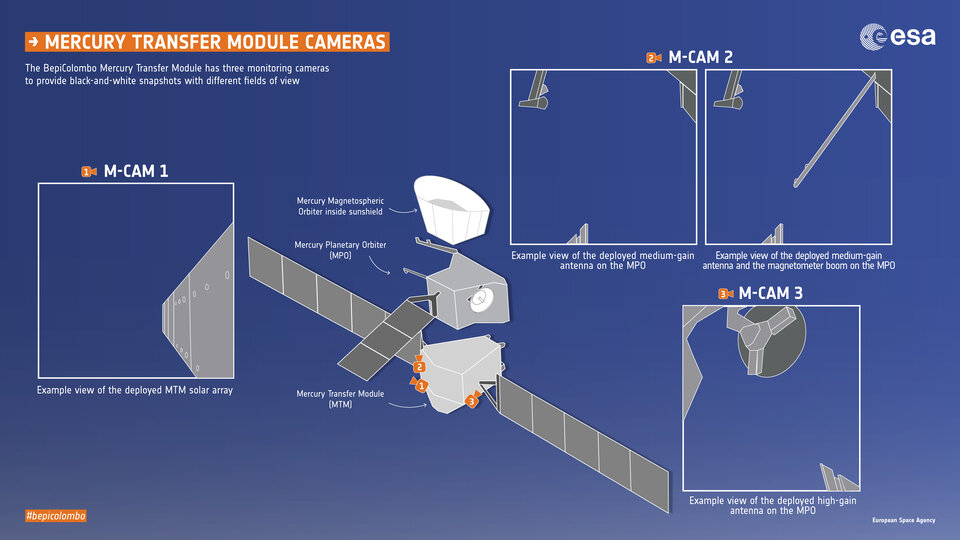
This flyby will also be the first to take BepiColombo over Mercury’s poles, helping to adjust the spacecraft’s trajectory to match that of Mercury, which is inclined compared to Earth’s orbit. We expect to be able to share BepiColombo's first stunning views of the planet’s south pole.
The first images will be downlinked a few hours after closest approach and are expected to be released on 5 September. The closest images are expected to reveal large craters, wrinkle ridges, lava plains and much more, helping scientists unlock the secrets of Mercury’s 4.6-billion-year history and its place in the evolution of the Solar System.
All images are scheduled to be released publicly in the Planetary Science Archive later in September. The first science results from data collected during the flyby will be released on 13 September.
Follow the flyby
Follow @esascience and @bepicolombo on X (formerly Twitter) for the latest updates, together with @ESA_Bepi, @ESA_MTM and @JAXA_MMO.
Image release timings are subject to change depending on actual spacecraft events and image availability.
By Madeleine Muzdakis on August 30, 2024
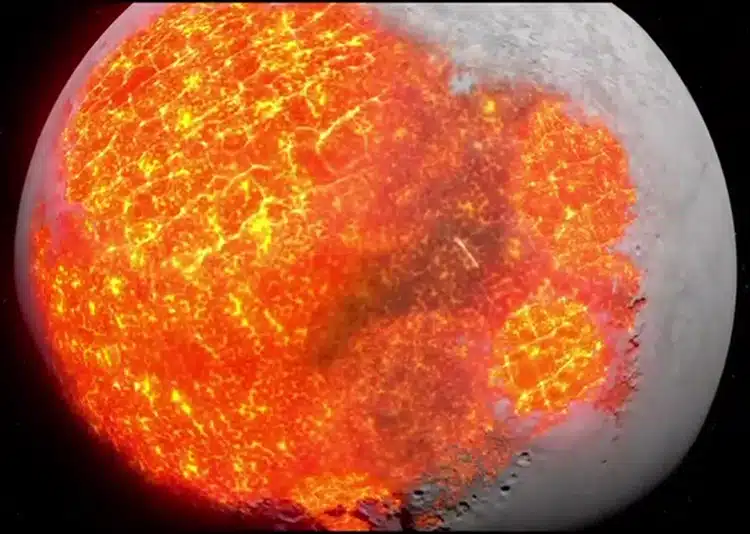
A visualization of what the magma ocean may have looked like. (Photo: NASA/Goddard Space Flight Center/Conceptual Image Lab)
The Moon is our planet's loyal companion, orbiting Earth every 27 days. Although over 200,000 miles from Earth, it is our closest celestial neighbor. It clocks in at one-quarter Earth's size, and its history is deeply entwined with its larger companion. Scientists believe the Moon was created when a protoplanet impacted the early Earth, breaking off a large chunk of matter, and eventually formed a new body. This new body became the Moon we know through a cooling process over millions of years. During that time, scientists have long believed the surface was covered in an ocean of magma. New evidence from lunar samples supports this theory, as announced in Nature.
As the debris of the impact 4.5 million years ago gathered into the beginnings of our Moon, the excess heat generated by impact melted the rock. Thus, a lunar magma ocean formed. Lighter rocks rose while heavier materials sank. Over the course of 200 million years the molten rock solidified into the rock surface seen today. However, the story is not so simple—as revealed by minerals in a sample taken by a rover from India's Chandrayaan-3 space mission.
The lunar soil, known as regolith, was taken from near the Moon's South Pole. “The high latitude regions . . . have undergone higher impact cratering due to their older age,” notes paper author Santosh Vadawale, while speaking to Popular Science. “This makes it challenging to identify safe landing zones of sufficient size, which probably was why most [early] landings took place in relatively safe Mare regions. However, the importance of landing closer to the poles has been known for quite a while, and . . . the number of attempts for landing at high latitudes has been increasing.”
This unique sample showed high levels of ferroan anorthosite, a light rock. Vadawale adds, “A key prediction of the lunar magma ocean hypothesis is the presence of a largely anorthositic crust.”
This finding supports the magma ocean theory of the Moon's history. It matches findings on other, more studied regions of the Moon. Interestingly, however, the lunar “soil” presented heavier magnesium-filled rocks, despite the fact they likely sank in the magma. The researchers speculate impacts from asteroids may have flung these minerals up from lower depths. While there are still questions to be answered, the successful sampling of polar material, which supports the lunar magma ocean, is an exciting step towards tracing the history of the Moon.
The Moon was likely once covered by a magma ocean, which eventually cooled to rock.
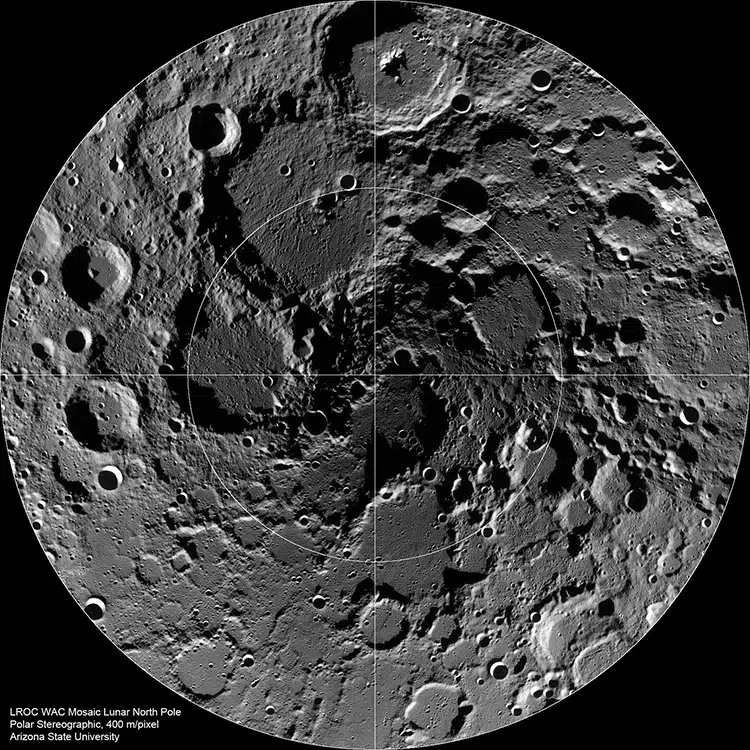
The surface of the moon's North Pole. (Photo: JPL/ASU/NASA)
New findings from a lunar rover support this theory of the Moon's formation.
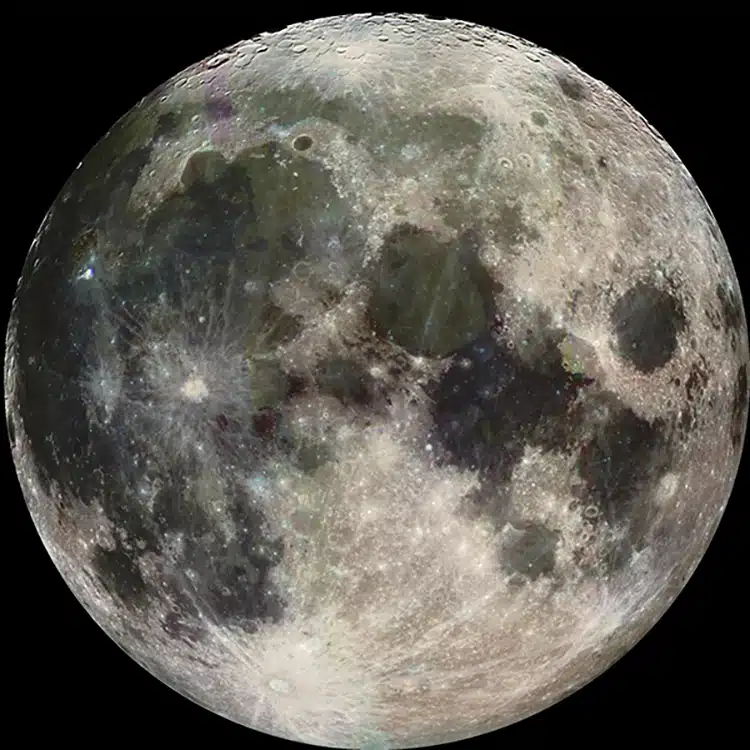
Photo: JPL/NASA
Learn more about the evolution of the
Moon.
h/t: [Smithsonian Magazine, Popular Science, Space.com]
Related Articles:
Colorful Infographics Explore the Mysterious World of Exoplanets
Scientists Discover Possible Ocean of Water Beneath Mars’ Surface
Upcoming Perseid Meteor Shower Will Be an Impressive Celestial Event
NASA Releases Stunning New Photographs to Celebrate Chandra Space Telescope’s 25th Anniversary


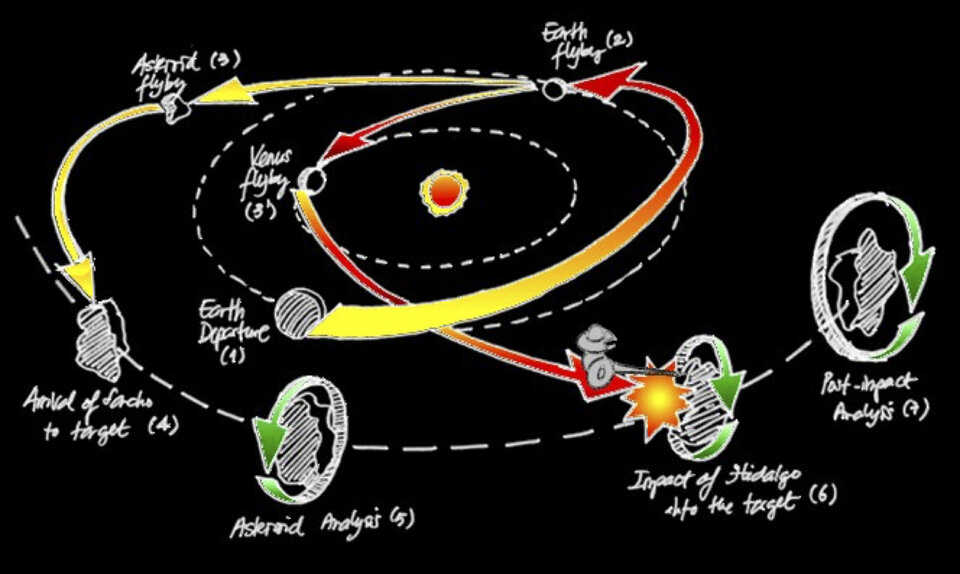
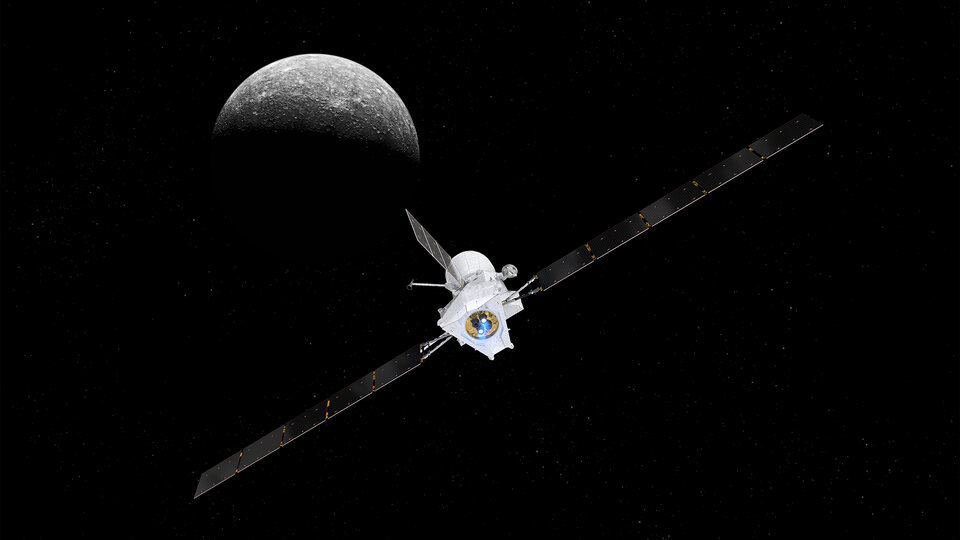
No comments:
Post a Comment